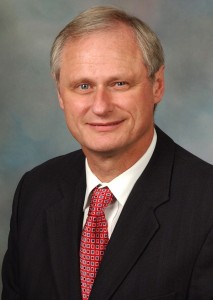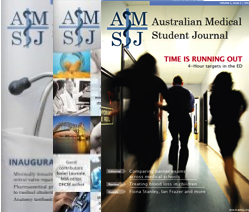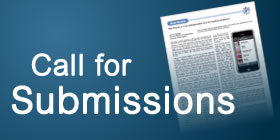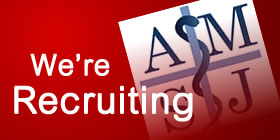Chair, Department of Internal Medicine, Mayo Clinic Jacksonville
Professor of Medicine and Epidemiology, Mayo Clinic College of Medicine
Consultant, Division of Gastroenterology & Hepatology

Prof. Nicholas Talley
I finished medical school at the University of New South Wales at the end of 1978 wrapping up my course with an inspiring elective at Addenbrookes Hospital in Cambridge, England; they invited me to stay on, but I returned to Australia eager to start my internship, although I had no clear idea of how my career path would progress. I have now been a practicing clinician, researcher and educator for about 30 years; I still love it. Everyone’s personal journey is different, and will be influenced by all sorts of external as well as internal forces, some of which are not under one’s control. However, we all learn lessons from others and perhaps a few pieces of advice will prove instructive.
Plan to periodically reinvent your career
Re-invention and renewal is the course I have chosen. I spent four years as a resident and medical registrar learning how to become a competent hospital based clinician from 1979 to 1982. I then decided I wanted a break; I was offered a research position with an outstanding academic (Prof. Douglas Piper) and decided to give it a go. I spent three very happy years from 1983 to 1985 undertaking a PhD at Royal North Shore Hospital in Sydney, then a further year as the Professorial Registrar at the hospital, years when I wrote the first editions of my most popular books, as I’ll describe later.
I developed a passion for generating new knowledge and publishing it, so I next decided to move to the United States (US) to join an outstanding expatriate Australian (Prof. Sidney Phillips) for further mentorship and training. I expected to stay a year but instead spent seven years in Rochester, Minnesota, initially as a Research Fellow at Mayo Clinic for 18 months and then as a junior faculty member (first as Assistant Professor, then Associate Professor – if you are productive, you can rise very rapidly in the academic ranks in the US).
In 1993, I returned to Australia to take up a new post as Foundation Professor of Medicine at Nepean Hospital, which had just been designated a new Teaching Hospital of the University of Sydney; I was 37 years old, had virtually no administrative experience and was charged with the daunting task of developing teaching and research plus new clinical departments in a hospital that didn’t even yet have a physicians training program. I spent nine exciting years developing a fresh dynamic Division of Medicine, introducing the new graduate medical program and actively engaging in research, education and clinical practice.
At the end of 2001 I was offered an opportunity to return to Mayo Clinic in Rochester for a period to pursue a new research passion; I wanted to focus on gene hunting in the functional bowel diseases. As I really knew little about how to do this, I initially undertook a Masters degree in genetic and molecular epidemiology at the University of Newcastle online; I learnt a lot about medical education trends being a virtual student! I had planned to be away about a year, but again was enticed to stay, even though returning to Mayo Clinic in 2002 required me to re-start my research program from scratch once again. I spent four years focused on building my research team and program.
In 2006 I was tapped on the shoulder to become the Chair of the Department of Medicine at Mayo Clinic Florida. My charge was to transform the Department into a cohesive academic entity, and I have focused on building teamwork and ensuring financial success while expanding teaching and research. The administrative experience in Florida has been exhilarating; I have learnt more about the science of leading and managing than at any other time in my career. My next (but hopefully not my last) transformation will take place later in 2010; I have decided to move back to Australia to take up the post of Pro Vice Chancellor (Health) at the University of Newcastle, where I will strive to make a positive difference in terms of research and education across the health faculties and in the country.
Strengthen your written and verbal communication skills
Some have asked me how I came to write medical textbooks so early in my career. Frankly, it was the combination of falling upon a good idea, a little luck, and a good team. I saw while having the pleasure of sitting the Fellowship examination for the Royal Australasian College of Physicians (FRACP) that there was an acute need for better guidance on how to prepare for this difficult test. I also recognized many useful clinical examination techniques were poorly discussed in the available textbooks; a detailed systems based approach was largely lacking. At the party celebrating my passing the FRACP exam, I invited Simon O’Connor to join me as a co-author; I knew his wit and style would help add life to the planned manuscript, plus I felt a team would be better equipped to cover the waterfront (and having a co-author…
 Download PDF
Download PDF Read online
Read online You can subscribe by e-mail to receive each issue when it's published.
You can subscribe by e-mail to receive each issue when it's published.
 Download the issue
Download the issue Print this extract
Print this extract Share on Facebook
Share on Facebook


